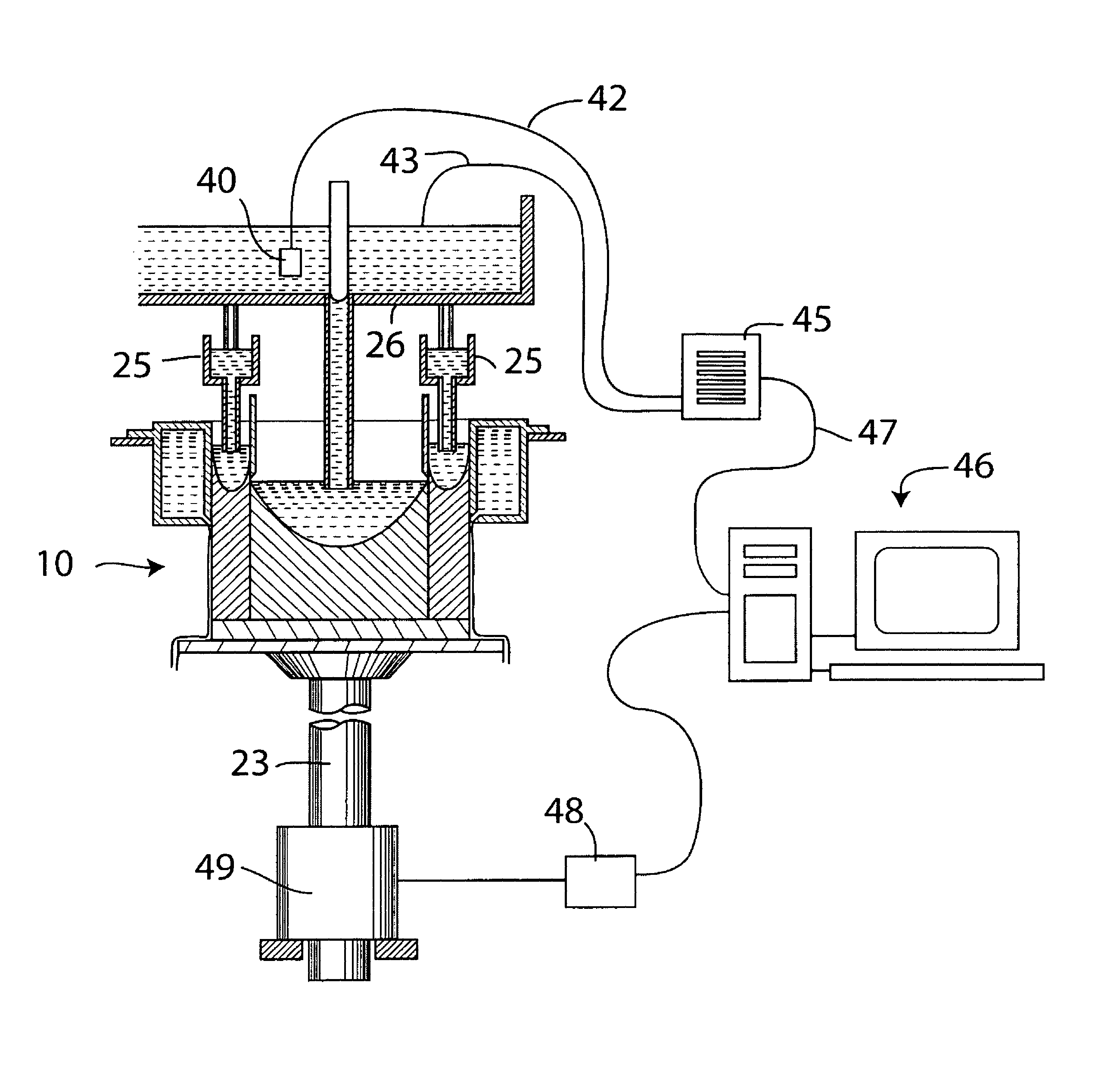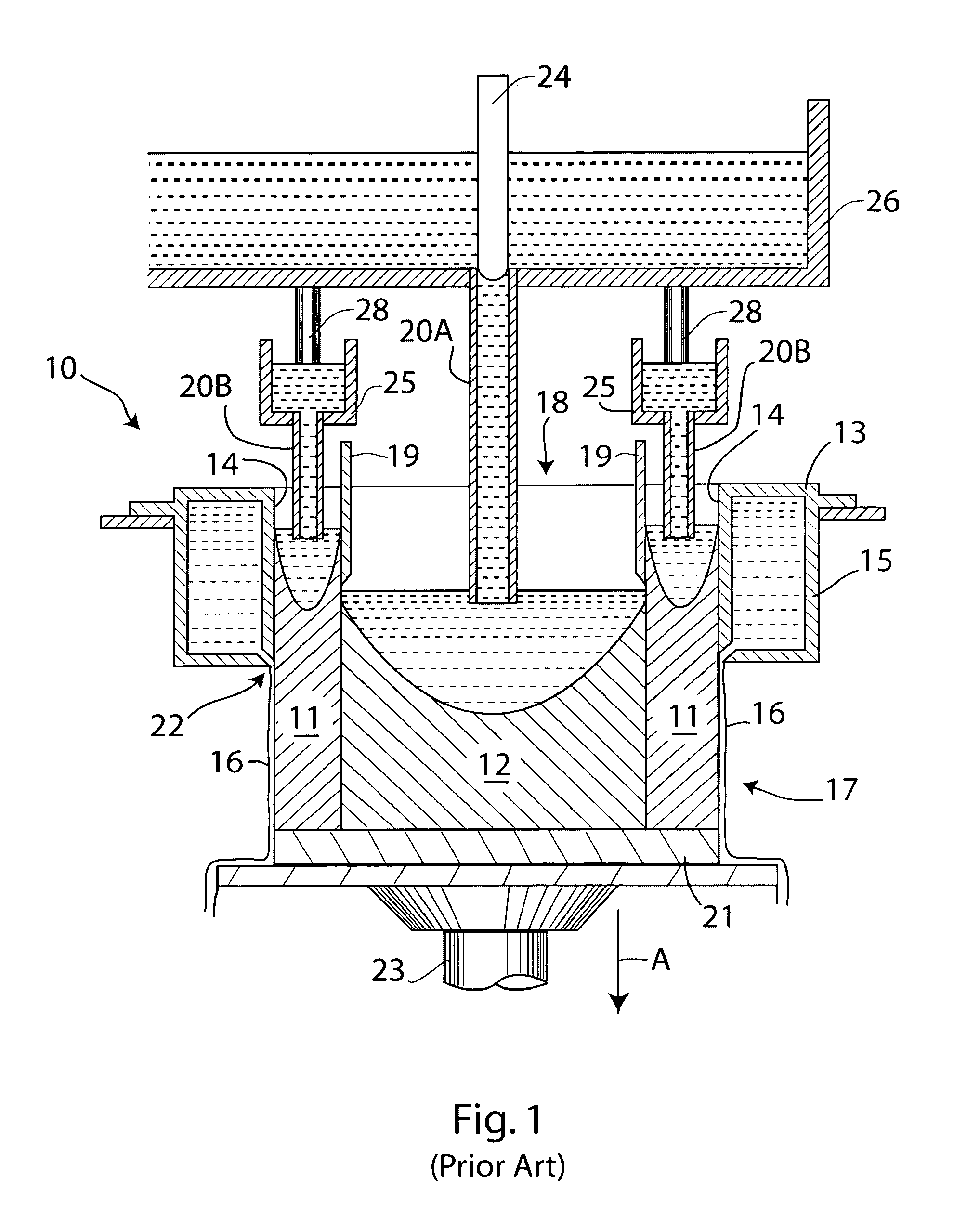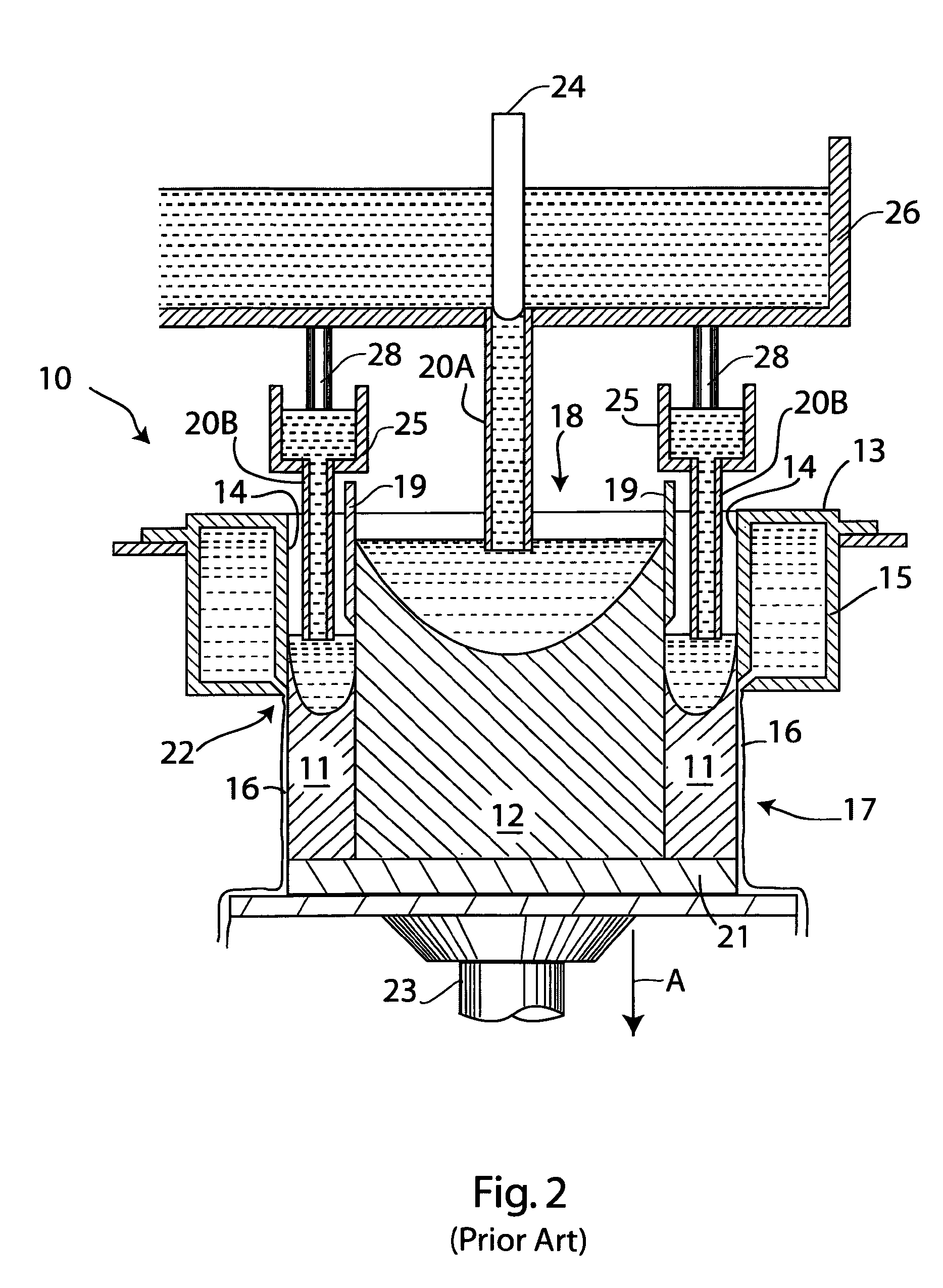Casting composite ingot with metal temperature compensation
a temperature compensation and composite metal technology, applied in the direction of casting parameters measurement/indication devices, manufacturing tools,foundry moulding apparatus, etc., can solve the problems of metal-metal interface failure, adversely affecting the cast product, and molten metal flow into the casting mold can be hindered
- Summary
- Abstract
- Description
- Claims
- Application Information
AI Technical Summary
Benefits of technology
Problems solved by technology
Method used
Image
Examples
examples
[0055]Examples of the way in which the casting speed can be adjusted, and on which an associated computer algorithm was based, are shown in FIGS. 6 and 7, where FIG. 6 shows the situation for a high clad casting arrangement and FIG. 7 shows the situation for a low clad casting arrangement. FIG. 6 involved the casting of a core of proprietary AA5000 series aluminum-based alloy containing about 6% by weight Mg, with two cladding layers of another proprietary AA5000 series aluminum-based alloy containing about 1% by weight Mg. FIG. 7 involved the casting of a core of AA3000 series aluminum-based alloy and two cladding layers of proprietary AA4000 series aluminum-based alloy, which resulted in an ingot later rolled to produce a brazing sheet product. Although the measured temperatures and adjusted casting speeds are not shown in these drawings, they varied within the indicated limits. That is to say, an adjustment of the casting speeds resulting from variations of the inlet temperatures...
PUM
| Property | Measurement | Unit |
|---|---|---|
| temperatures | aaaaa | aaaaa |
| temperatures | aaaaa | aaaaa |
| temperatures | aaaaa | aaaaa |
Abstract
Description
Claims
Application Information
 Login to View More
Login to View More - R&D
- Intellectual Property
- Life Sciences
- Materials
- Tech Scout
- Unparalleled Data Quality
- Higher Quality Content
- 60% Fewer Hallucinations
Browse by: Latest US Patents, China's latest patents, Technical Efficacy Thesaurus, Application Domain, Technology Topic, Popular Technical Reports.
© 2025 PatSnap. All rights reserved.Legal|Privacy policy|Modern Slavery Act Transparency Statement|Sitemap|About US| Contact US: help@patsnap.com



